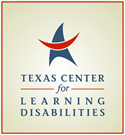Hall, C., Roberts, G., Cho, E., McCulley, E., Carroll, M., & Vaughn, S. (2016). Reading instruction for English learners in the middle grades: A meta-analysis. Educational Psychology Review. Advance online publication. doi:10.1007/s10648-016-9372-4
Summary by Dr. Amy Barth
Overview
English learners (ELs) comprise 9.2% of the national enrollment across kindergarten to grade 12 (Kena et al., 2015). In addition, the population of ELs is growing considerably faster (i.e., 63.3%) than non-ELs (i.e., 4%).
ELs frequently develop oral language and literacy skills in both their first and second languages while simultaneously learning academic content during their school years. However, one challenge is reading proficiency for grade-level content-based texts. The magnitude of this challenge is reflected in ELs’ performance on the National Assessment of Academic Progress. Specifically, the gap separating ELs and non-ELs was 39 points in grade 4, 45 points in grade 8, and 53 points in grade 12 (National Clearinghouse for English Acquisition and Instruction for Educational Programs, 2015). For this reason, an important focus across K–12 education is how to enhance instruction to close the reading proficiency gap that separates ELs and non-ELs.
To address this concern, Hall and colleagues (2016) conducted a systematic review and meta-analysis (empirical synthesis) of literature pertaining to reading instructional practices where English was the primary language of instruction for ELs in grades 4 to 8. This review investigated the impact of these practices on outcomes across academic contexts (e.g., social studies, science, English language arts) to address the following two research questions:
- What nonprogram reading practices are associated with improved academic outcomes for ELs in grades 4 to 8?
- What study characteristics, student characteristics, and/or features of instruction are associated with improved academic outcomes?
In brief, results indicated that across content areas and grades, ELs significantly benefit from high-impact approaches to reading instruction. Across studies, the mean effect size for all reading measures was g = .35, the effect size for measures of reading comprehension was g = .25, the effect size for measures of vocabulary was g = .38, the effect size for measures of content knowledge was g = .09, and the effect size for writing was g = .24. Results indicated that the effects were smaller for studies of higher quality. Finally, dosage of instruction was not a significant predictor of treatment effects. Below the primary results of this synthesis are summarized.
Key Findings
Results of the synthesis revealed several reading characteristics that were common across all or most studies that resulted in improved reading performance, including the following:
- Teachers encouraged active student engagement by providing frequent opportunities for students to respond and read grade-level texts (see Table 1).
- Teachers promoted student motivation to learn by providing students with engaging instructional materials or contexts, opportunities to make choices, and occasions to work with peers in partnerships or small groups (see Table 2).
- Instruction developed vocabulary alone or a combination of vocabulary and reading comprehension (see Table 3).
- Students received instructional supports in their first language (see Table 4).
| Method | Description |
|---|---|
| Word generation | Academic vocabulary instruction Weekly persuasive writing activities Frequent partner and whole-class discussions |
| Academic Language for All Students (ALIAS) | Academic vocabulary instruction Variety of small-group, whole-group, and independent activities that promote deep processing through opportunities to listen, speak, read, and write target vocabulary |
| Vocabulary Improvement Program (VIP) | Academic vocabulary instruction Small-group and partner discussions, writing in word logs, and games of charades that target understanding and use of target vocabulary |
| Multicomponent reading instruction | Reading comprehension instruction “Turn-and-talk” partner discussions about texts, writing exercises, and interactive science activities to promote reading comprehension in the sciences |
| Content reading instruction | Reading comprehension instruction Writing activities and discussions about texts with student partners |
| Computer-supported instruction | Reading comprehension instruction Written or orally recorded responses to computer prompts and book discussions in small-group literature circles |
| Method | Description |
|---|---|
| Five E teaching model | Five Es: Engage, Explore, Explain, Extend, and Evaluate Example: The Engage stage piqued students’ interest in the upcoming task through a quick demonstration, a short interesting reading, or a provocative question with discussion |
| Content reading instruction anchors | Short video or audio clip to anchor instruction in a meaningful way |
| Word generation | Target vocabulary presented in meaningful, engaging contexts that are relevant to students’ interests and that built background knowledge |
| Transactional literature circles | Engaging texts with an element of controversy Students provided with varied levels of support, choice, multimedia access, and a focus on their experiences |
| Partner and small-group discussions | Increased opportunities to respond Interactive and motivational in nature |
| Type of Instruction | Description |
|---|---|
| Vocabulary | Repeated exposures to target words Opportunities to use words in a variety of contexts (i.e., oral and written) and discuss the nuances of words Prompts to associate a visual image with the word and make personal connections to the word Average of 2.5 to 20 words taught per week |
| Vocabulary + Reading Comprehension | In addition to the vocabulary features described above, the following comprehension strategies were targeted: Self-questioning Summarization Comprehension monitoring and/or clarifying one’s understanding of text Predictions Visualizations of the text Perspective taking Personal connections with text |
In summary, the systematic review by Hall and colleagues (2016) suggests that the reading skills of ELs can be improved by increasing (a) the active engagement of students, (b) their motivation to learn, and (c) the first-language supports provided in general education content area classrooms.
References
Kena, G., Musu-Gillette, L., Robinson, J., Wang, X., Rathbun, A., Zhang, J., . . . Dunlop Velez, E. (2015). The condition of education 2015 (NCES 2015-144). Washington, DC: National Center for Education Statistics.
National Clearinghouse for English Acquisition and Instruction Educational Programs. (2015). Fast facts: English learners (ELs) and NAEP. Retrieved from http://www.ncela.us/files/fast_facts/OELA_FastFacts_ELsandNAEP.pdf
